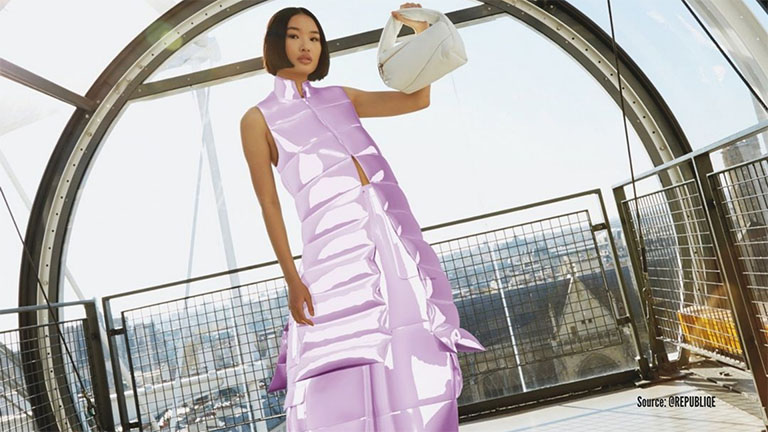
METAVERSE: A NEW WORLD?
For some, metaverse is just a sexy term that is being hyped in all of today’s big headlines. For others, metaverse “simply” refers to the future of the internet. Is there any right or wrong? We do not know. But one thing we are sure of: the metaverse is just getting started.
The term metaverse generally represents a highly immersive and shareable virtual world where people can socialize, work and play, just like in physical life, but in a virtual environment. The word “meta” is related to the idea of transcending human reality, something different and beyond the conventional world. In fact, the origins of the word meta go back to a Greek word meaning “beyond.” In this case, beyond the universe itself. The term “metaverse” inevitably takes us to Neal Stephenson’s 1992 book called the Snow Crash. The science fiction writer used the term to describe a computer-generated universe. To the more fearful, the metaverse may seem a frightening and intimidating non-human reality, but the truth is that the metaverse simply represents the natural evolution of the world and technology.
If we look back, online communications have been around since at least the mid-1980’s and grew into the 1990’s chatrooms and instant and direct communication websites. For example, the World of Warcraft game became a huge success in the early 2000’s and since then more communities have been getting together and getting to know each other through purely digital games and socialization. Today, all we have to do is look at the numbers and see games like Fortnite providing the big stages where new generations meet and interact. It’s not just about video games with thrill and adventure components, but about providing a social experience with the right dose of physical and digital interactions. And that’s the metaverse. Whether using virtual or augmented reality, the promise of the metaverse is a combination of physical and digital life in wealth, socialization, productivity, entertainment, and even shopping.
Some experts argue that to understand the vague and complex meaning of the metaverse, people should try to mentally replace the word with “cyberspace”. And why do experts say this? Because the metaverse is not just a single technology or a single space, but the broad ecosystem in which users and humans interact with technology.
Of course there are some technologies that are especially relevant when we talk about the metaverse, most notably are the virtual and augmented reality. Virtual reality represents completely imaginary worlds that exist beyond ordinary and normal life. Augmented reality combines aspects of both digital and physical worlds. We can access virtual worlds through our computer, game consoles and even our smartphones, so there are several entrances to the metaversal world.
Does this seem unrealistic to you? It’s not. The metaverse is just a logical extension of the internet, and the internet is just a technological extension of our lives. Everything is interconnected and everything makes sense in the end. Nowadays, most of the interactions that we already find common in person also occur within a completely digital space. The Uber app has access to our location. Netflix recommends a series or movie based on our preferences. We are already on Web3, where the internet is not just our ally, but our tool for practically everything we do in our life.
SO WHAT WILL THE FUTURE LOOK LIKE?
This is never an easy question to answer, but let’s go back 10 years and wonder if we could ever have imagined getting this far. If we put our futuristic hats on, it doesn’t make sense that today’s internet would continue unchanged. Future generations were born visiting websites, instantly downloading apps and quickly decoding links. So how can the internet stay the same? It is unrealistic to imagine and idealize a future where digital interaction is just on a screen and in a single place.
Actually, a German study published by DAK-Gesundheit found that from 2019 to 2020, usage of social media and video games grew by at least 60 percent among children between 12 and 17. More recently, according to the State of Fashion 2022 report published by McKinsey & Company and BoF, 81 percent of Gen-Z played video games in the past six months for an average of 7.3 hours per week. That being said, Gen-Z alone in 2020 spent an average of eight hours per day on screens. Now the mission is not just to look at a simple screen and interface but to a complete digital world where everything is easily interconnected.
IS THE METAVERSE JUST ABOUT PLAYING VIDEO GAMES?
The right answer is no. The video games and gaming industry clearly represent an excellent starting point and entry point into the all-digital universe. However, if you think about the big picture in the next generation of the web, the metaverse represents much more than that. However, video games are extremely important to this future reality. In fact, Cathy Hackl, aka the goddess and brilliant female mind behind the metaverse, told Time magazine that her 9-year-old son didn’t want a simple or conventional birthday party, but rather a celebration at Roblox, a digital platform that allows users to simultaneously play games and create their virtual avatars. She also stated that even in a party held in a fully digital environment, she could also feel the emotion and excitement of children playing and interacting together.
All of this reflects the enormous impact that the video game and digital entertainment industry has on our lives, even our physical ones. In fact, major gaming platforms started to host concerts by famous international artists in order to intensify the socialization and experience components. For example, Fortnite hosted concerts by Ariana Grande and Travis Scott, while Lil Nas X’s Roblox concert last year got 33 million views. Actually, the art and creative industry has never been so up-to-date in the footsteps of the metaverse. Artists such as David Guetta, Snoop Dogg, Ne-Yo and Akon are already investing in partnerships and building immersive music experiences for the metaverse because they know where their next fans will be.
HOW CAN LUXURY JOIN THE DIGITAL SPACE?
Karinna Nobbs, co-chief executive of The Dematerialised, once described the metaverse as “Bigger than the internet”. That couldn’t be more true. Despite the negative impacts of the Covid-19 pandemic, the luxury industry is expected to fully recover by the end of 2021. Luxury goods industry revenues for the year 2021 are $309,845M and studies predict the market will grow annually by 5.72 percent (CAGR 2021-2025). As expected, within the luxury sector, the most representative segment is luxury fashion with a market volume of US$108,396M in 2021.
If the luxury industry is not only recovering but growing, why is the metaverse such an important player for the future? Easy. Digital demand for fashion and luxury brands is growing at a breakneck pace and a study conducted by Morgan Stanley predicts that digital luxury goods, especially digital fashion, could grow by an additional $50 billion by 2030.
Although the metaverse is still a work in progress, NFTs, social gaming and other digital platforms represent real business opportunities for luxury brands. Actually, NFTs and gaming experiences could expand the luxury group’s total addressable market by more than 10 percent in the next eight years and boost industry earnings before interest and tax by around 25 percent.
Some of the biggest luxury brands are already understanding the power of digital universes and opening their traditional minds to a new generation and era of virtual interaction. In addition to real revenue opportunities, the universe born of technology is also an incredible ally for the development of a true community and digital culture. However, is there any sure way or safe path for the luxury industry to enter the metaverse? This was the question and challenge that we launched to our community on various digital platforms. It is clear that among NFTs, digital fashion and gaming, the clearest path for luxury brands to shine in the metaverse lies in Digital Fashion and NFTs.
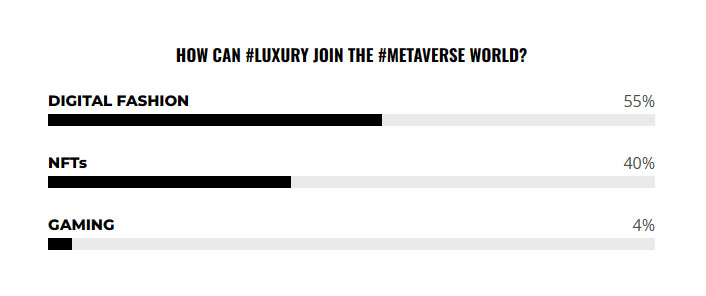
DIGITAL FASHION – THE NEXT BIG THING FOR LUXURY?
Digital fashion is the latest fashion trend, which is produced through 3D-applications and virtual programs. In addition to everything being digital, the key word for virtual fashion is sustainability. With the purpose of reinventing and transforming one of the most polluting industries in the world, digital fashion produces everything that the traditional industry does, such as shirts, dresses, hats, shoes and other accessories, but in a completely intangible way.
“I CAN DEFINITELY SAY THAT DIGITAL FASHION HAS REDEFINED THE CONVERSATION IN ONE OF THE LARGEST INDUSTRIES IN THE WORLD. THE FACT THAT IT IS AN INCREDIBLY VISUAL SPACE AND THAT IT CAN COMPLETELY REINVENT ITS PRODUCTS FOR VIRTUAL REALITY IS VERY POWERFUL. IT IS A KIND OF HYBRIDIZATION EXPERIENCE OF PHYSICAL PRODUCTS BECOMING VIRTUAL, OR BUILDING TWINS OF EACH OTHER. THE VIRTUAL EXPERIENCES PROVIDED ARE IMPRESSIVE, AND SOME OF THE MAJOR LUXURY BRANDS ARE STARTING TO NOTICE THE IMPACT AND ARE TRYING TO JOIN THE DIGITAL REVOLUTION PARTY.”Enara Nazarova – Founder at ARMOAR, Digital Fashion & Art Club & Top 30 Voice in the Metaverse
That said, instead of consumers buying an item and using it in real life and on the street, consumers can now wear their digital clothing through augmented reality and digitally altered photos. Does it seem unnecessary? Just unlock your phone and browse your Instagram feed or other social network and we realize that people have been turning to social media filters for years and with the amazing growth of the gaming skins market, digital fashion is estimated to be a multibillion dollar industry in the future.
Virtual clothing is taking the spotlight and stepping onto the red carpet in style. In fact, Daria Shapovalova, co-founder of DressX, the platform that estimates the total addressable market for digital fashion at $31 billion, stated in State of Fashion 2022 that there are two types of digital fashion consumers. One type is Millennials, who get the idea of the market and want to become active and elevate their digital presence through fashion digital assets. The other type is Gen-Z’s, who were born and raised on platforms like Snapchat or TikTok, where video is becoming the main communication tool; to them, digital fashion becomes a no-brainer.
So get ready because the time where screenwear becomes the new streetwear has arrived. In fact, digital fashion is the true and authentic way for people to express themselves while defying all obstacles of physicality. Right now digital designers are gaining momentum and creating digital fashion pieces and pushing creative boundaries to the limit.
“THE NEW GENERATIONS HAVE A VERY DIFFERENT UNDERSTANDING OF WHAT IT MEANS TO BE ABLE TO POSSESS AN ASSET THAT IS VALUABLE. IF IT IS PHYSICAL, THE LIMITATION IS THAT ONLY A FEW PEOPLE IN THE COMMUNITY WILL BE ABLE TO SEE IT. HOWEVER, IF YOU POSSESS SOMETHING THAT IS VIRTUALLY VALUABLE, THE REACH TO AUDIENCES IS MULTIPLIED. WITH A DIGITAL ITEM, THE NEWEST GENERATIONS ARE ABLE TO SHOWCASE THE ITEM, CHANGE IT OVER TIME, AND INTERACT IN REAL TIME WITH A MUCH LARGER AUDIENCE. THERE IS A SHIFT TOWARDS OWNERSHIP OF VIRTUAL GOODS; IN SOME CASES, THEY MAY BE EVEN MORE VALUABLE THAN THE PHYSICAL GOODS.”Enara Nazarova – Founder at ARMOAR, Digital Fashion & Art Club & Top 30 Voice in the Metaverse
Why is digital fashion sustainable for the environment? According to a study by United Kingdom-based online banking company BarclayCard, around 1 in 10 UK consumers said they buy clothing online just to wear it once and for the purpose of posting a photo on social media and then returning the item. This behavior is closely related to the human need to express and distinguish ourselves equally in the digital world. Digital fashion has never been so real.
In fact, The Opportunity in Digital Fashion and Avatars BoF’s guide to explaining digital assets in fashion, examining the metaverse and underlying technological, social, and consumer shifts, indicates that 70 percent of US general consumers rate their digital identity as important. At least 50 percent are interested in purchasing a digital asset in the next 12 months. About 65 percent rate digital ownership as very important.
Digital fashion could be the next big thing in luxury. With virtual influencers like Lil Miquela stealing the Instagram stage and promoting gravity-defying or liquid-textured outfits, the sky’s the limit. As Natalia Modenova, COO and co-founder of DRESSX, once said, “Digital fashion is an opportunity to redefine business models and build a more sustainable and progressive future”.
To summarize, digital clothing is now booming because it is eco-friendly and sustainable in contrast to that from the more traditional fashion industry because consumers are increasingly thirsty and hungry for an #ootd (“outfit of the day”) to share on social media. Digital fashion allows each person to build a digital wardrobe in a way that avoids waste, overproduction, and overconsumption.
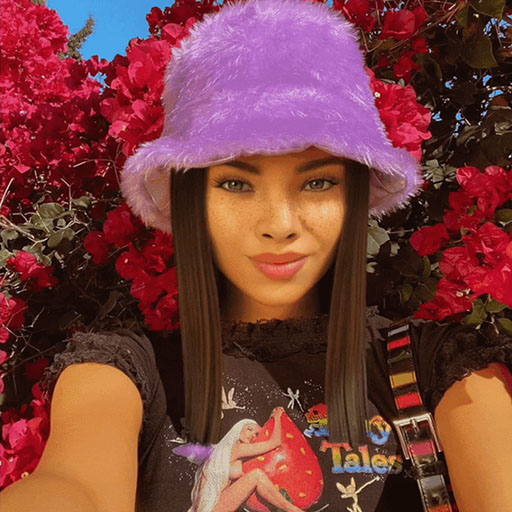
In addition, the digital fashion market gives users the ability to build their visual identity in the virtual space and express themselves through their tastes, ideas and fashion preferences, not just on Instagram Square, but also on video games, social interaction platforms and virtual experiences.
Some digital fashion houses that are undoubtedly making their presence felt in the space include “Tribune,” the Croatian-based company that creates “contactless cyber fashion” and “The Fabricant,” an Amsterdam-based digital fashion house that believes in “always digital, never physical” as the way to enter the next generation of the fashion industry. Other popular ones are also the Republiqe, DressX, Replicant and of course RTFKT, recently acquired by Nike, Inc.
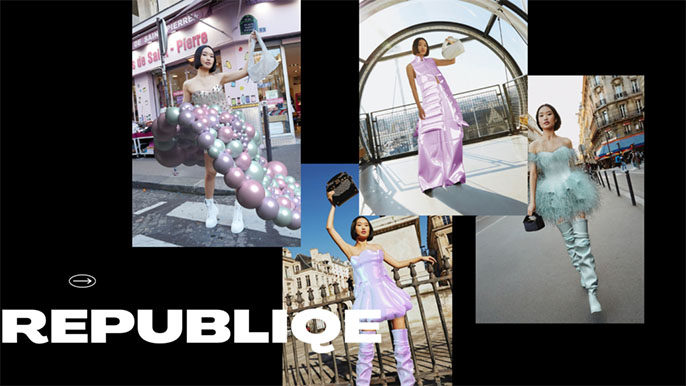
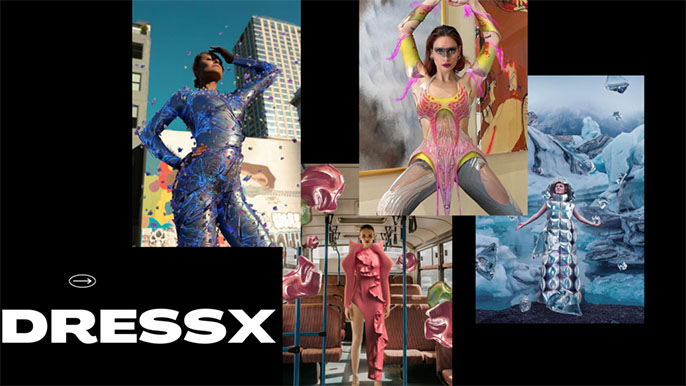
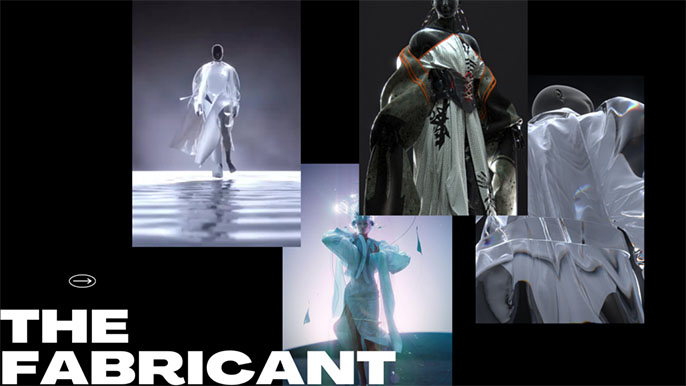
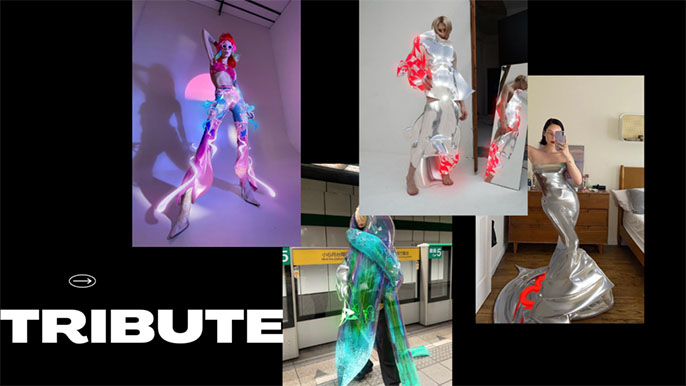
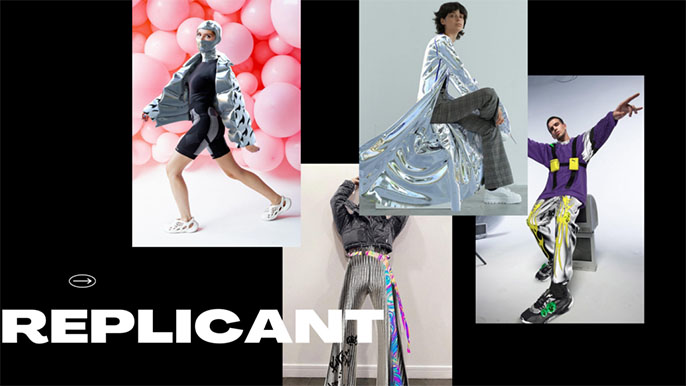
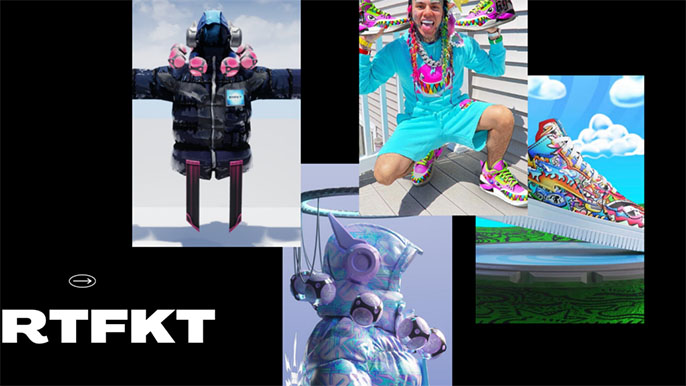
NFTS + LUXURY – WHAT IS THE STATUS OF THE RELATIONSHIP?
Will non-fungible tokens be the next best friends for some of the biggest luxury brands? For some, the answer is quite clear: NFTs are the virtual representation of the future generation of digital luxury. “Non-fungible” is defined as something unique that cannot be replaced by anything else. That object or item can be anything digital, whether it be a drawing, music, sound, image, or digital videos. With NFTs, all of these pieces of art can be “tokenized” to generate a digital ownership certificate that can be bought and sold.
But how do NFTs relate to the luxury sector? Traditional pieces and works of art such as emblematic paintings of famous icons are valuable because they are unique and authentic. In addition, each item has a story, a narrative, and an entire project behind its conceptualization. However, in the digital space, virtual files are easily duplicated and devalued, so therefore, NFTs come into play as the true way to authenticate pieces and their market value, considering artistic creation and certification through smart contracts on the blockchain. In some ways, we can say that NFTs are a new way of creating authentic digital luxury assets.
In fact, some luxury brands have already emerged out of their traditional bubbles and risked launching their own NFT projects. Why? Within the world of luxury, fungibility is not what consumers are seeking. Luxury brands have dealt for years with a love/hate relationship with space. Digital transformation and NFTs have turned out to be the digital way to convey exclusivity and essence, even in a totally open and shareable space. That said, with a non-fungible token, each asset or product is different, or at least has some level of rarity and uniqueness.
With the COVID-19 pandemic, cryptocurrency price insanely increased. According to a report by analytics platform DappRadar, the NFT trading volume surged in the third quarter of 2021 to $10.67 billion, representing more or less a 704% increase from the previous quarter. This maximum increase derived from a number of factors, but according to researcher DappRadar, people spent thousands or even millions on NFTs because of belief in the tech and social capital.
That first reason relates to how NFT investors see the long-term value in digital asset projects. New projects appear every day, with some quite rare, and with a huge potential that makes many investors bullish on the tech that surrounds many NFTs projects. The second reason: it’s all about community. Owning a particular NFT is considered a form of social status in the crypto community. Much like the Conspicuous Consumption Theory given by Thorstein Veblen, an NFT projects our identity and social status into the digital hemisphere, just as a luxury product does in real life.
Therefore, having an NFT goes beyond simply owning the article, it also confers a certain status. NFT owners belong to a particular community, a completely exclusive and secret club only for the most special members. And with major celebrities like Snoop Dogg, Shaquille O’Neal and Steve Aoki, among many others joining the fray, the hype surrounding this community of owners has never been greater.
“WANTING TO BE PART OF SOMETHING AND WANTING TO BE PART OF A GROUP IS NATURAL”.
THE ICONIC @GMONEY
So, to answer the first question about the state of the relationship between NFTs and luxury, it seems clear to us that NFTs are a way to purchase a luxury experience digitally. Luxury brands should look to NFTs and cryptocurrency not with fear or hesitation, but as new business opportunities and as a way to foster new community interactions. Belonging to a Gucci digital NFT club will be like being invited to a private party, such as a fashion show ,in real life. This is the future for luxury, and future generations will increasingly want the luxury industry to reinvent itself and assume a lasting relationship with NFTs, given that NFT’s are almost certain to be the currency of the metaverse.
SHOULD LUXURY ENTER INTO GAMING?
Gaming is an industry that made $175 billion in 2020 and according to a Newzoo survey, video games are having a critical impact on popular culture. The gaming industry is likely to grow to 729 million users in 2021, with an estimated $180 billion in revenue, mostly from in-game assets. As well as being an industry with fantastic growth over the years, more and more women are participating as well. In fact, the 2020 report from the Entertainment Software Association found that 41 percent of all gamers in the United States are women.
So the question shouldn’t be whether luxury brands should get into gaming, but a question of when and how. Over the past twenty years we’ve seen luxury brands make a strong presence in collaborations with powerful gaming platforms. For instance, Burberry has its own range of website games like B Surfing, a fun Mario Kart-meets-monogram racing game; Marc Jacobs and Valentino outfits have turned up in Animal Crossing; Balenciaga has developed a video game named “Afterworld: The Age of Tomorrow” to showcase its fall 2021 collection; Gucci was present in Roblox and reality simulation games like “The Sims”; Louis Vuitton partnered with Riot Games’ League of Legends to develop prestigious skins for the 2019 League of Legends World Championship Finals. Even recently, the French luxury brand developed a mobile game called “Louis the Game”.
That said, some of the big luxury brands, namely those related to fashion, are already abandoning traditional practices and entering the digital worlds of younger consumers. Gamification is a trend that is here to stay and luxury fashion brands have realized that in an immersive environment with three-dimensional interaction, consumers can express themselves and use fashion in a fun and experimental way. The grand and majestic avenues of luxury in the big cities have now been transposed into virtual games and shopping malls that only exist in the metaverse. Gaming, in fact, is of paramount importance to the approaching era of new luxury, as it allows interactions for a special type of digital interactions common in younger generations.
But if we’re never going to live inside games, why is virtual life taking on so much importance? It’s all about digital identity and human complexity. People (in this case, gamers) who spend most of their days in front screens naturally want to express themselves creatively and develop a certain kind of character in virtual worlds. Gaming is associated with entertainment and has a large social component and therefore, it is logical that human beings would wish to build an identity within a game. And that’s where skins, digital products and a whole new unexplored universe come into play. Buying products online in-game is nothing new. In fact, it’s been done for a long time and is well-known to anyone who is an active gamer.
However, what some luxury brands have not yet realized is the need to come up with a 10-year plan for in-game business practices. In the future, a video game will not only be a place for entertainment and virtual expression, but a retail opportunity – a place to engage with communities and interact with consumers. Gaming represents a 3D, digital social experience and luxury brands that fail to see the potential of this marketplace are simply preventing themselves from being relevant in the future.
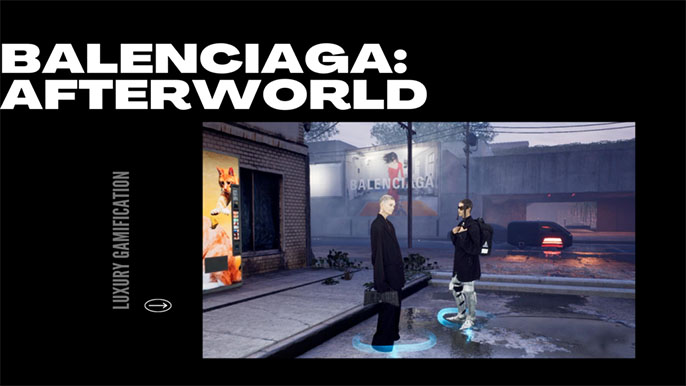
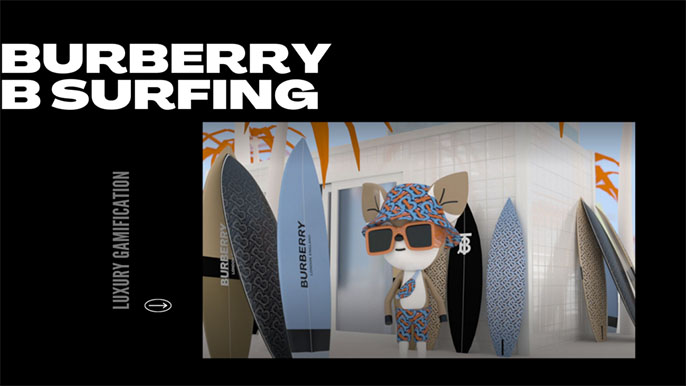
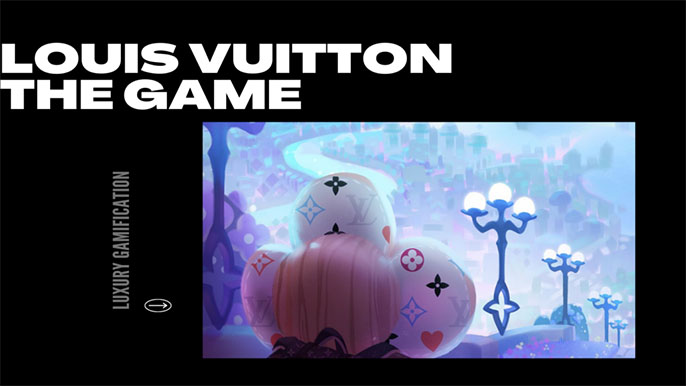
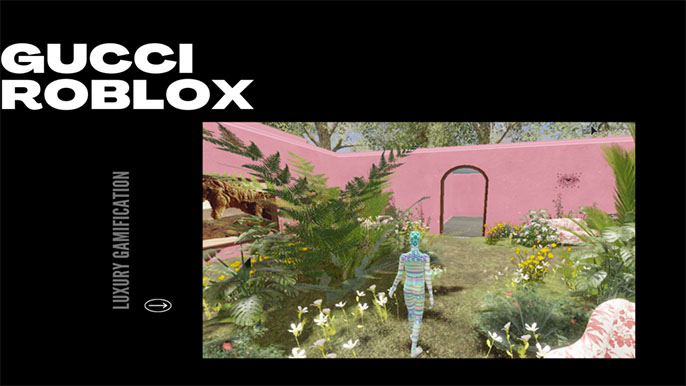
IS METALUXURY A NEW THING NOW?
“FACEBOOK WOULD NEVER DESTROY THEIR BRAND AND CALL IT “META,” IF THEY DIDN’T BELIEVE THAT THIS IS THE NEXT STEP. NOTICE THAT FACEBOOK – SORRY, META – IS ONE OF THE COMPANIES THAT HAS THE MOST DATA ON HUMANS, EVER, ALONG WITH GOOGLE AND MICROSOFT, WHO ARE ALSO MOVING INTO THE METAVERSE SPACE.”Konrad Probst, CEO of Property’s
The metaverse is here to stay and if luxury wants to stay active in the game, the only possible way is to enter this new and unknown world called metaverse. With big companies like Microsoft and Facebook taking their first steps in the virtual space and assuming themselves as important players for the future, the history of the digital universe is just in its first chapters.
Across the big internet headlines we see that the digital universe, also known as the magical world of augmented and virtual reality and data collection, are considered to be the next big thing after AI. We also see that the companies that will succeed are largely gaming companies such as Epic Games with the Fortnite video game and other gaming platforms that are also making waves. Roblox is increasingly gaining more importance in the metaverse space giving way to truly innovative and engaging entertainment and social experiences for younger generations. Decentraland is also one of the big names hanging over this new universe that is being built and is seen as a new place to enter the metaverse and experience a completely different virtual moment. These are just a few of the words that allow us to interact and live digitally, just as we do physically in the real world.
It’s time for a fresh start. The metaverse represents a new world, with new potentials, but also new challenges. Luxury brands must minimize the traditional mindset and risk exploring new worlds and new ways of interacting and relating to the community.
If once the issue was the love/hate relationship between digital and luxury, now is the time not to lose in a battle between the metaverse and the traditional world. Brands that cling to the hope that the world, and especially the consumer has not changed will certainly be the most affected by that change.
So what happens when Metaverse meets Luxury? Metaluxury. Metaluxury is a new perspective of luxury, yet to be written and yet to be fully discovered. But one thing is for sure: The future has arrived, and luxury brands that don’t grab the attention of future generations in this decentralized and shared world will be the first to lose their connection.